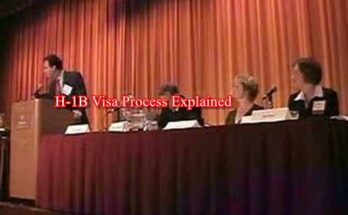to the H-1B Visa Process .The H-1B visa is a non-immigrant visa that allows U.S. companies to employ foreign workers in specialty occupations that require specialized knowledge and a bachelor’s degree or higher. This visa is popular among professionals in fields such as IT, engineering, healthcare, and finance. Here’s a step-by-step guide to understanding the H-1B visa process, Navigate the Visa Process: Tips and Requirements.
What is the H-1B Visa
The H-1B visa allows U.S. employers to hire foreign nationals for up to three years, with the possibility of extension to a maximum of six years. It is designed for specialty occupations, which means the job must require at least a bachelor’s degree or its equivalent. The foreign worker must possess the necessary qualifications for the role, such as a relevant degree and experience.
Understanding the H-1B Cap
The H-1B visa is subject to an annual cap. Currently, the U.S. government issues 85,000 H-1B visas each fiscal year. Of these, 65,000 are for applicants with a bachelor’s degree or higher, and an additional 20,000 are reserved for individuals holding a U.S. master’s degree or higher (the master’s cap). Certain employers, such as universities and nonprofit research organizations, are exempt from the cap.
The H-1B Visa Application Process
Employer Sponsorship: The H-1B process begins with a U.S. employer offering a job to a foreign worker. The employer must be willing to sponsor the worker for the visa. Self-petitioning is not allowed under the H-1B category.
Labor Condition Application (LCA): The employer must file a Labor Condition Application (LCA) with the U.S. Department of Labor. The LCA is designed to ensure that hiring the foreign worker will not negatively impact the wages and working conditions of U.S. workers. The employer must attest that the H-1B worker will be paid at least the prevailing wage for the position in the geographic area.
Filing the H-1B Petition: Once the LCA is approved, the employer can file Form I-129, Petition for a Nonimmigrant Worker, with U.S. Citizenship and Immigration Services (USCIS). This petition includes information about the employer, the job, and the qualifications of the foreign worker.
H-1B Lottery: Due to the high demand for H-1B visas, USCIS conducts a random lottery if the number of applications exceeds the annual cap. Employers must register for the lottery during the registration period, typically in March. If selected, they can proceed with the full H-1B petition.
Approval and Visa Stamping: If the H-1B petition is approved, the foreign worker will need to apply for an H-1B visa at a U.S. consulate or embassy in their home country. They will attend a visa interview and, if approved, receive a visa stamp in their passport, allowing them to enter the U.S. to begin work.
Duration and Extensions
The initial H-1B visa is granted for up to three years, with the possibility of extension for another three years. In some cases, extensions beyond six years are possible, especially if the worker is pursuing permanent residency (green card) through the employer.
Rights and Responsibilities
H-1B visa holders have the right to work only for the sponsoring employer. They must maintain their status by working in the specialty occupation for which the visa was granted. Changing employers requires filing a new H-1B petition, known as an H-1B transfer.
Conclusion
The H-1B visa is a valuable pathway for skilled professionals to work in the U.S., offering opportunities for career advancement and the potential for permanent residency. For employers, it provides access to a global talent pool. Understanding the process, from employer sponsorship to visa issuance, is crucial for both employers and employees to navigate the complexities of the H-1B visa system successfully.




